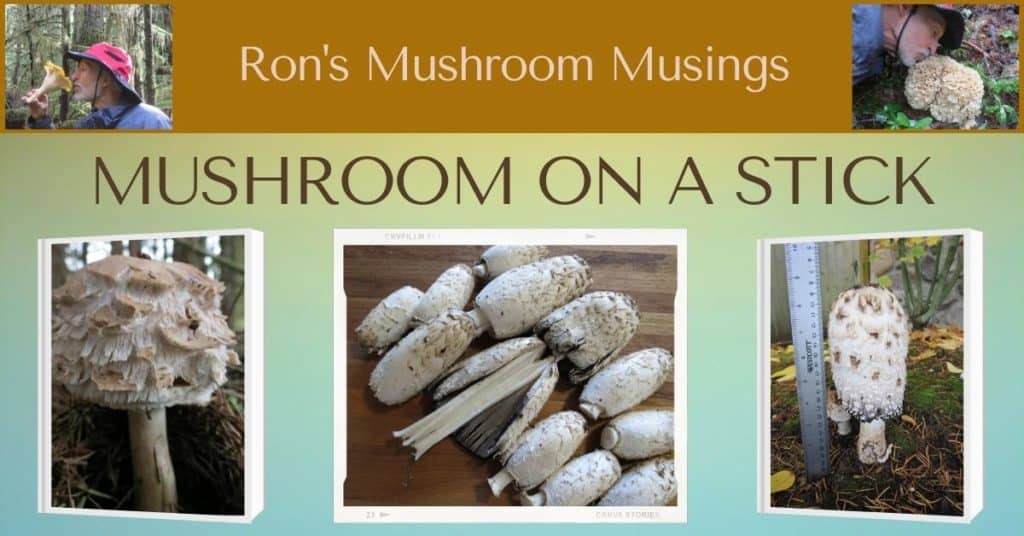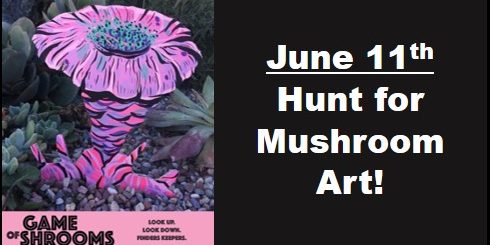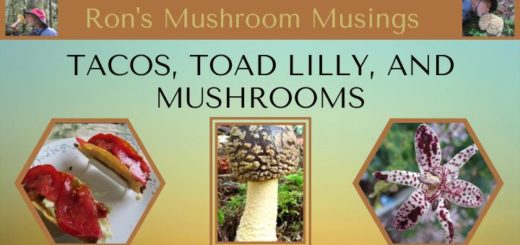Mushroom on a Stick


While no one I know actually calls Coprinus comatus by the common name “mushroom on a stick”, its long cylindrical or tubular looking cap sitting on a stout fibrous stem can certainly look like one. Instead, someone decided to call it the shaggy mane mushroom. Actually, the scientific name references a somewhat different characteristic about this mushroom. According to Roy and Charlotte Lukes, “Coprinus is from a Greek word meaning dung, called this because many in this group are found growing on manure piles or on richly manured ground. Comatus is from coma, which means hair. Both scientific and common names refer to the shaggy scales that cover this mushroom’s cap”. So, if mushroom on a stick isn’t your cup of tea you can stick with calling it shaggy mane or perhaps it would be more accurate to use the Greek interpretation and call it the “dung hair” mushroom. There’s nothing like chowing down on a batch of freshly sautéed dung hair mushrooms or perhaps a bowl of dung hair mushroom soup would be more to your liking? Both sound quite appetizing.

Regardless of what we call this attractive and quite unique mushroom, It does have a shaggy cap reminiscent of another shaggy mushroom called Chlorophyllum rhacodes or more commonly referred to as the shaggy parasol. Both have a fibrous stem and both have edible caps. A big difference between these two species is the shaggy parasol’s cap will expand out to form a more typical cap style while the shaggy mane’s cap will begin to deliquesce (liquefy itself) as it matures. This behavior has led to even another common name for this mushroom, the inky cap. The impetus for this name arose from the fact that the black inky goo that drips down from the bottom of this mushroom was actually used as ink way back in the day. Some found the use of ink and paper to be somewhat less labor intensive than chiseling your message into a rock and it was also cheaper to mail.
The key to using the shaggy mane as a culinary mushroom is to find it before it starts to liquefy itself. Sandy and I found our first cluster of shaggy manes in a grassy area in late October on the same Saturday that CMS members and volunteers were setting up for the annual Mushroom Festival at the Mount Pisgah Arboretum. Being fairly new to the whole mushroom hunting experience, we decided to drive out to the Mount Pisgah Arboretum and contribute our find to the mushroom display table. We proudly brought our mushrooms over to the identification table where Freeman Rowe told us he’d be delighted to take them from us. Strangely enough, although shaggy manes were on display at the festival, they weren’t the ones we brought to Freeman on Saturday. We could only surmise that “delighted to take them from us” implied they were destined for Freeman’s fry-baby deep fryer. In any case, we’re certain they were put to good use.

While we have found both small clusters and large patches of the shaggy mane mushrooms over the years it wasn’t until this year that we actually decided to see what it tasted like. We used our typical sauté method of minimizing oil and butter and omitting seasoning to limit the influence other ingredients might have on their natural flavor. While some recipes include the stem, we omitted using it as they can become fibrous, especially in older shaggy manes. After our mushrooms reached that joyous golden brown stage of color it was time for the taste test. Sandy, being the more adventurous taste tester, selected the first piece to sample. Seeing a somewhat disappointed look on Sandy’s face, I bravely selected a fairly small piece and gave it a try. I was also disappointed in the mushroom as it seemed to have a somewhat foul tasting flavor profile. Sandy likened it to what she thought month old road kill would taste like. This being a fairly popular mushroom, we were both surprised at our unpleasant reaction to its flavor. We will most likely try it again at a later time to see if we get a different outcome. Perhaps Freeman Rowe’s technique of tossing them into a deep fryer is the key to making just about any mushroom taste good.
If you are interested in finding the shaggy mane or dung hair mushroom, we have spotted it at the coast, in the Lorane valley, and several places within Eugene. Being a Saprobic mushroom, it can be found growing on wood chips, lawns, composted areas, and just about anywhere it finds a suitable food source. Be careful not to collect shaggy manes from chemically treated lawns or high traffic areas as this species is known to absorb and concentrate heavy metals like cadmium, mercury, and arsenic. While they generally fruit after the fall rains begin, they can also fruit sporadically at any time during the year. If you find this mushroom in a suitable location, give it a try and let us know what you think about the taste.
As always, stay safe, be certain of the mushrooms you intend to eat, and enjoy your mushroom hunting adventures.
References:
A Guide to Missouri’s Edible and Poisonous Mushrooms
Shaggy Manes are really Strange
Recipes:
Forager Chef – Parmesan Crusted Shaggy Manes
Food for Hunters – Shaggy Mane Omelet Soufflé





